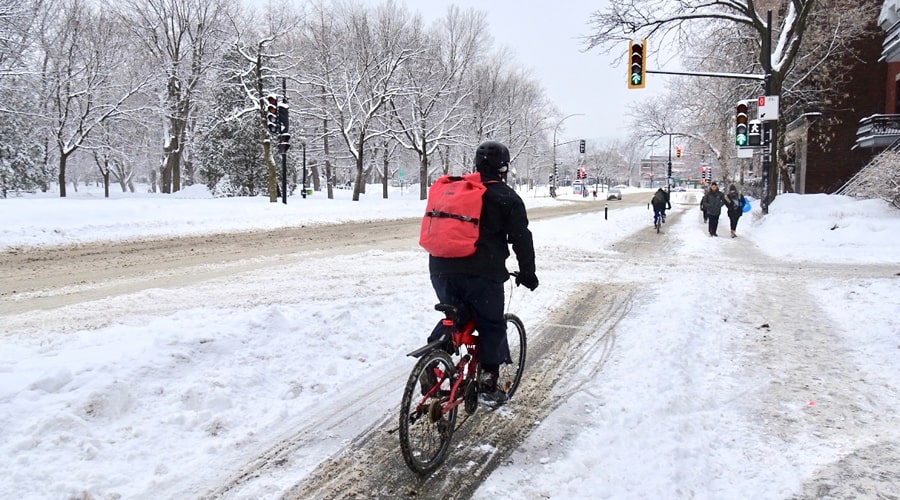 Tip: Before leaving, make sure that your brakes and gears are working properly and that your chain is well lubricated. Also, given that the roads are wet in winter, protect yourself and others from grimy spray by equipping your bike with full-length fenders.
Tip: Before leaving, make sure that your brakes and gears are working properly and that your chain is well lubricated. Also, given that the roads are wet in winter, protect yourself and others from grimy spray by equipping your bike with full-length fenders.
Tip: Things freeze in winter! Always remember to keep a small bottle of bike lock de-icer in your bag or coat pocket in order to avoid starting your day late and in a bad mood. (very affordable and convenient, available in hardware or bike stores).

